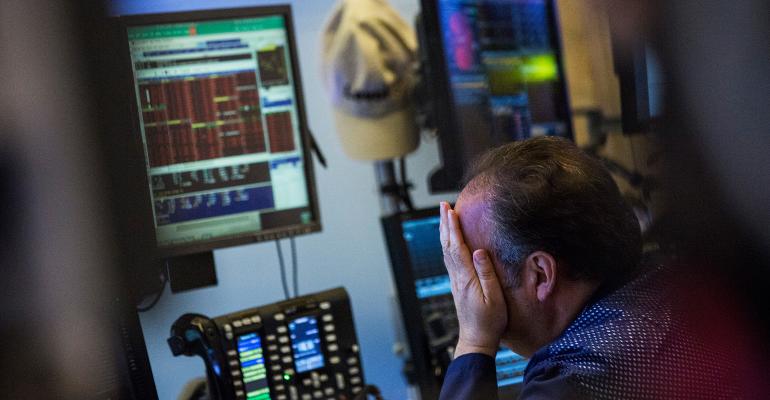(Bloomberg) -- The stars seemed to be lining up for stock pickers in July. Lockstep share moves loosened during earnings and shares were charting their own course. But those favorable developments didn’t guarantee success.
In the best July for the S&P 500 in 10 years, only 28% of actively-managed large-cap funds beat their benchmarks, according to data compiled by Bank of America. That’s the worst showing in two years and a deterioration from the first half of 2020, when 48% of managers outperformed.
While an aversion to some of the best-performing sectors such as utilities and consumer staples hurt returns, BofA strategists led by Savita Subramanian also pointed to a lopsided market as the culprit. Once again it was dominance by a handful of tech giants that told the tale. Gains in behemoths like Apple Inc. and Amazon.com Inc. made it all but impossible for a diversified portfolio to win out.
Massive outperformance by such companies -- which also include Facebook Inc., Alphabet Inc. and Microsoft Corp. -- has been a hallmark of 2020’s stock market. The big five, equipped with solid balance sheets and products that enable social distancing, have seen their combined share value grow almost 40% this year. Stripped of them, the S&P 500’s market value would be lower in 2020. The hurdle posed by their dominance may have reached a breaking point in July, at least as far as active funds are concerned, when their representation in the Russell 1000 Index rose to a record 38%.
“The Russell 1000 benchmark is incredibly concentrated,” Subramanian wrote in a note to clients. “Concentration is increasingly problematic for fund managers.”
On the other side of ledger are banks and energy producers, whose shares are down at least 19% amid concerns over the health of the economy.
Read more: Nasdaq Valuations Say You’ll Be Stuck at Home for a Long Time
Missing the big winners is fatal. Apple’s 17% gain in July was triple the S&P 500’s. Among some 150 actively managed funds that are benchmarked to the S&P 500 and have at least $500 million in assets, a quarter don’t hold Apple shares and their returns have averaged 7.4% since the end of June. By contrast, those who count the iPhone maker for 5% of holdings or more are up 8.6% over the same stretch, data compiled by Bloomberg show.
“When you have very polarizing themes, you can end up picking things on one side or another, and that means picking individual stocks gets more complicated,” said Katy Kaminski, chief research strategist and a portfolio manager for AlphaSimplex Group’s managed futures strategy. “It’s a very polarizing environment where the only clear winner has been tech.”
While it’s just one month of data, the underperformance highlights the grave challenge that active funds are facing in the battle against passive investing. Over the past decade, investors have poured trillions of dollars into index funds and ETFs at the expense of active managers.
One driver often cited for the exodus is their poor returns. Take large-cap blend funds, which invest in the same kinds of stocks you’d get in an S&P 500 index fund. Over the 10 years through June, just 8% of them managed to both stay in business and beat the benchmark, data compiled by Morningstar Inc. show.
To contact the reporter on this story:
Lu Wang in New York at [email protected]
To contact the editors responsible for this story:
Courtney Dentch at [email protected]
Chris Nagi, Jeremy Herron








